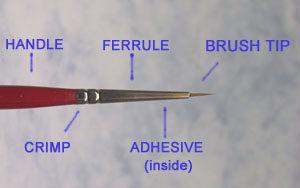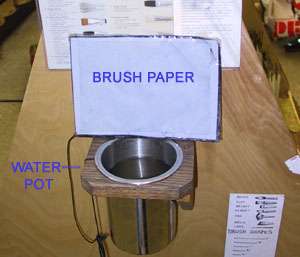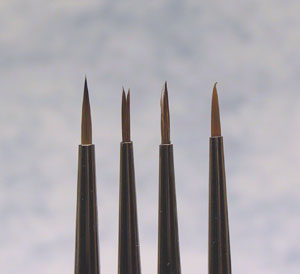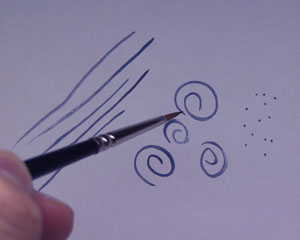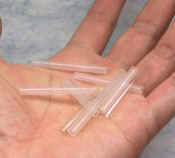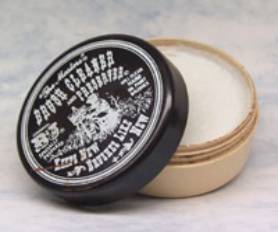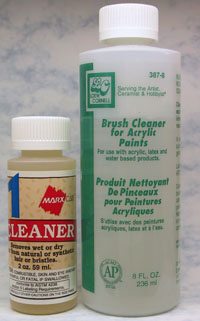|
|
|
Articles |
|
Painting
|
Paintbrush
Selection Submitted
by: Larry Imatani |
| Introduction
A
paintbrush is probably the most important tool that you will purchase
in helping you bring a miniature to life. With proper selection
and care, a good quality paintbrush is an investment in the miniature-painting
hobby, and can make the experience all the more enjoyable. With
a fine tip, you, the painter will have more control in the application
of paint, exactly where you want it to be. So take extra time in
choosing and caring of your brushes, as they will result in your
best possible work. Anatomy of a paintbrush In general most paintbrushes are still assembled by hand with brush tips made from either natural or synthetic hairs. These hairs are bound together with cord or nylon rope and then set into the metal ferrule with a wax based adhesive. The wooden or plastic handle is then pushed into the back of the ferrule and held in place with a crimp. Knowledge of how a paintbrush created is important, because it allows you to properly care for your brush. Because the adhesive that holds the brush hairs is wax based, you should never rinse your brushes in hot water. This can melt the adhesive, causing the hairs to unseat themselves, losing the valuable pointed shape necessary for fine control. Also, the contact point between the handle and ferrule is not waterproof. Any moisture that collects within this area from indiscriminate washing will cause a wooden handle to swell and then contract, resulting in loose paintbrush handles.
Traditionally paintbrushes were made with natural hairs. Today we have synthetic nylon bristle brushes specifically designed for use with acrylic paints. Sable brushes are generally regarded as the best material for natural hairs. Red sable is considered a good grade of material obtained from weasels, and the type of hair most novice painters are familiar with. Kolinsky Sable is the most expensive and highly regarded natural hair from tails of weasels found in Northeast Asia. It has an almost unnatural ability to hold a pointed shape due to the natural taper of the hair fibers. Paintbrushes made from ox, badger, goat, horse, or mongooses are not suitable for use in miniature painting, mainly due to their inability to hold a fine point. Synthetic hair paintbrushes are a more recent innovation, made primarily from nylon or polyester fibers. They can also be manufactured with a tapered shape, and can have a stiffer feel compared to natural hairs. They are also more resistant to solvent damage, and do not wear out as easily as natural brushes. Low grade synthetic brushes will eventually curl at the tip, forming an annoying hooked shape. Regardless
of what kind of brush hair you choose, make sure it is the best
quality you can afford, and be prepared to spend some time picking
and choosing the best brushes available to you.
One of the best places to purchase paintbrushes is your local art supply store. Invariably they will have a larger selection of brushes, allowing you to choose from handle length, hair type, hair style, etc. I'm not trying to put your favorite hobby shop out of business, but if you are serious about painting to the best of your abilities, you owe it to yourself to broaden your horizons. One benefit of an art store is that you can actually "try out" the brushes. Better grades of brushes will come unpackaged, point up. A good art supply store will have a pot of water, and special brush paper for you to test the point of the brush. By dipping a brush in the water and painting several lines onto the paper provided, you can accurately judge if the brush has characteristics you desire. Dont worry, the water evaporates off the brush paper, and can be reused. In addition most art supply stores offer frequent sales and discounts if you have a student ID.
When purchasing a paintbrush, you have to keep in mind what you are really paying for is the brush tip. This is really important because you are looking for a brush that comes to a fine taper, with no frayed hairs, and a sharp firm point that doesn't waver when you apply a brush stroke. When you find a brush without any visible damage, (such as bent hairs, etc.), dip it all the way to the ferrule into the water, flick off the excess, and form it to a sharp point with your fingers.
(Left to Right) pointed, "fishtail", stray hairs, hooked tip Now test the point: 1) "Paint" several straight lines on the paper provided. Does the tip fishtail or break up? 2) Now paint little swirls on the brush paper. Any problems yet? If not you probably have a good brush. 3) Finally lightly "stab" the tip onto the paper, as if you were painting many tiny dots
Does the brush still have a good point? If so, perfect! You now have a brush that exhibits good snap(ability to retain a pointed shape), a quality much desired by artists in their brushes. Now make sure you find another paintbrush with similar properties and purchase the best one. Dont forget to pick up a few caps to protect the brush hairs.
Care of your brushes during Use There are a few rules that I follow when using my paintbrushes. I never use the brush tips to mix paints. I never dip the tip of the brush into paint so deep that it gets into the ferrule. Any buildup of paint in the ferrule can cause the brush hairs to splay out, ruining a fine tip. If I notice paint collecting near the ferrule, I stop painting immediately, and rinse the brush in warm water and soap. This is inevitable, because capillary action will draw paint up into the ferrule no matter how careful you are. The key is to stop and clean it out before paint has a chance to dry inside the ferrule. You can use this time as a break to change your water pot, and stretch out you back. In addition, wash your hands frequently when the brush feels slick after hours of painting
Brush
cleaning After each painting session, take the time to carefully inspect your brush.Look for frayed hairs, and carefully tease them out if necessary. Purchase specially prepared "brush soaps". Various manufacturers sell these, and they safely remove the rings of paint under the ferrules easily. In addition they replace natural oils removed in most cleaning processes. Use brush soap to remove any paint you find between fibers and under the ferrule according to the instructions. If you paint frequently, condition your brush once a month or so. I use shampoo with conditioner on them. Swish your brush in some hair conditioner, wipe off the excess, shape to a point then leave it upright for an hour or so. Rinse off well with lukewarm water, then with a little brush soap, shape to a perfect point. Let it stand upright with a cap on them. I actually put my brushes in the same cabinet as my miniatures, so they will remain dust free!!!!!
|
|
|
Click Here to go back to Articles Page |
 |
